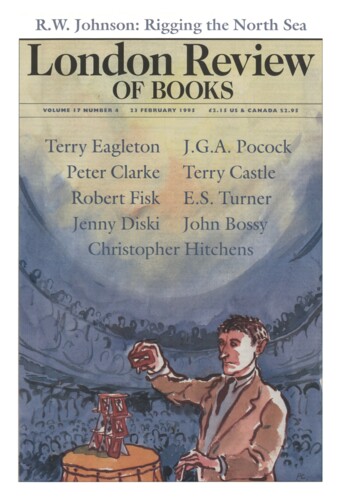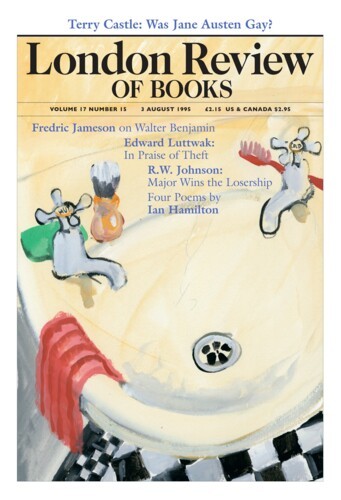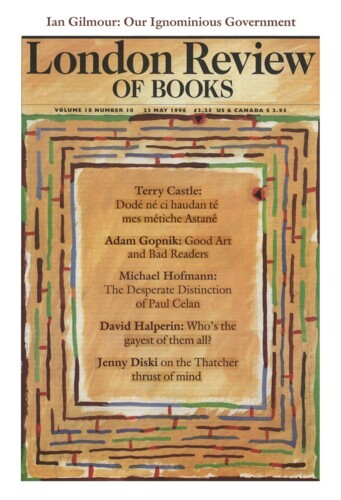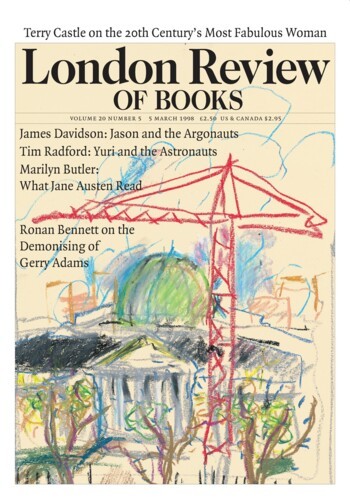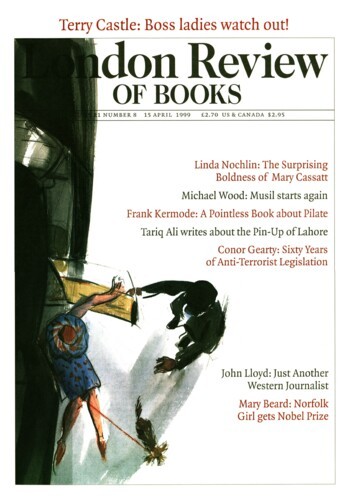Sublimely Bad
Terry Castle, 23 February 1995
How bad are most of the novels produced by English women writers in the decades before Jane Austen? Sad to say, just when one thinks one has read the very worst of them, another comes along to send one’s spirits plummeting further. Eliza Fenwick’s excruciating pseudo-Gothic epistolary novel, Secresy; or, The Ruin of the Rock (1795), is hardly the first ‘lost’ 18th-century woman’s novel to be resurrected over the past decade by feminist literary historians. Other recent finds include Eliza Haywood’s snooze-inducing The British Recluse from 1722 (‘a sad Example of what Miseries may attend a Woman, who has no other Foundation for belief in what her Lover says to her, than the good Opinion her Passion has made her conceive of him’); Sarah Fielding’s deeply unpleasant David Simple (1744), in which characters with names like Spatter, Lady Know-All and Mr Varnish assail the gormless hero until he drops dead of despair; and Sarah Scott’s thoroughly demoralising Millenium Hall (1762), on the supposed consolations of living in a grim all-female community where one does nothing but sew all day and read aloud from Scripture with one’s pious fellow virgins. Whether, given the competition, Secresy is so ‘sublimely bad’ – in Pope’s phrase – to take the crown of ultimate badness, remains to be seen.’
